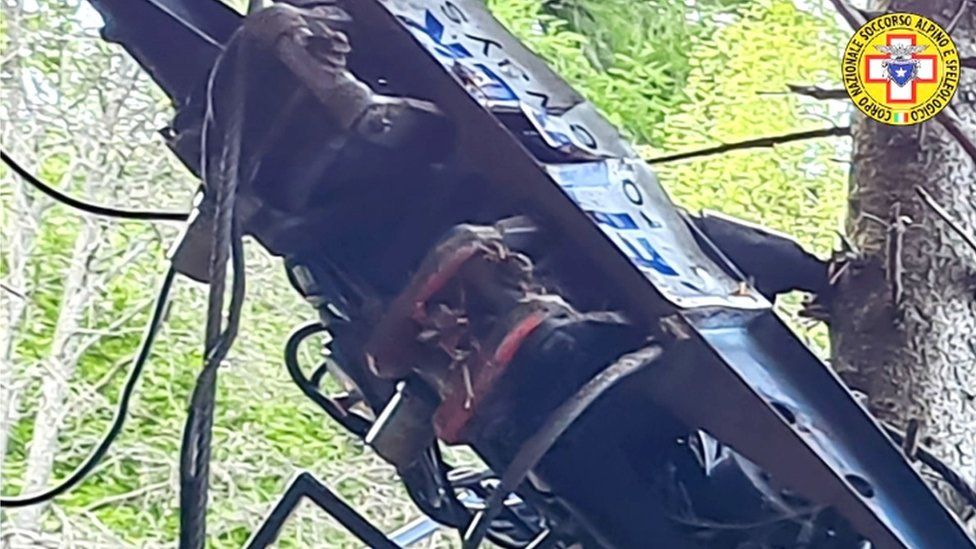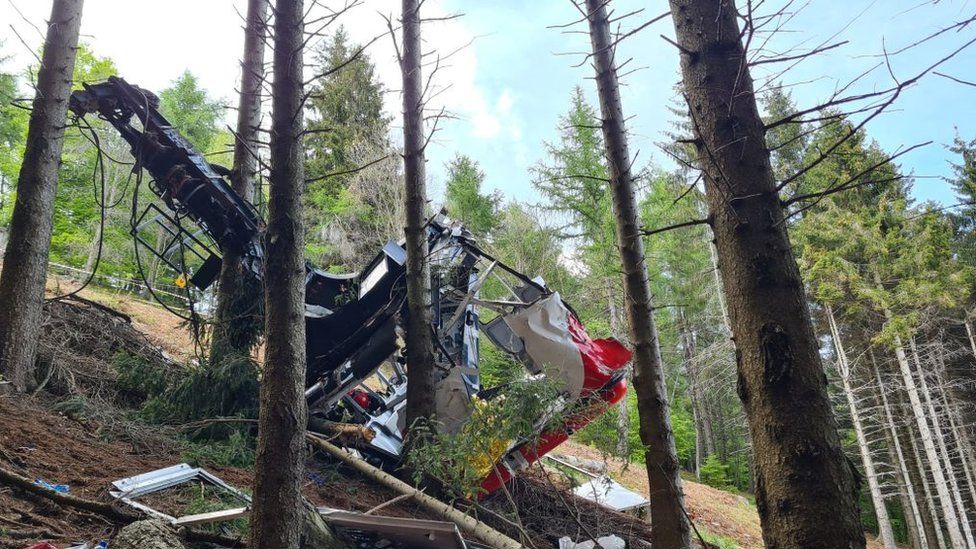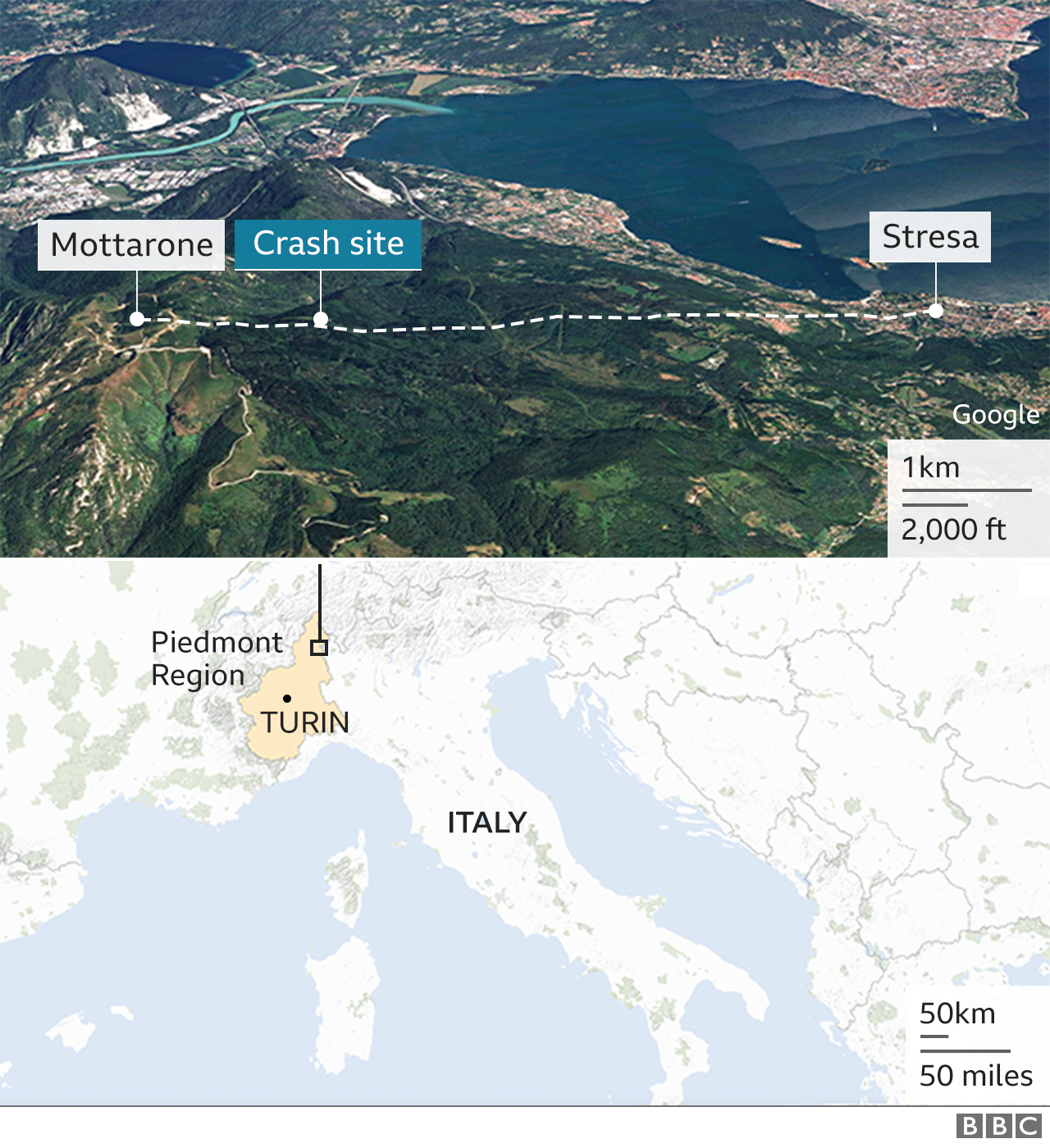Three people have been arrested in Italy over Sunday’s cable car accident that left 14 dead.
Investigators say the emergency brakes had been disabled and the three members of the operating company were aware.
According to a local transport official, the brake failure meant the car was travelling at over 100km/h (62 mph) when the cable broke.
The car plunged 20m (65ft) into the side of the Mottarone mountain near Lake Maggiore in northern Italy.
Prosecutors are carrying out an investigation into suspected involuntary homicide and negligence.
Was the brake tampered with?
The three suspects have been identified as the owner, director and chief of operations of the company that managed the cable car.
AFP reports that local prosecutor Olimpia Bossi told a press conference that the brake had been tampered with in a “conscious act” and suggested the car was unsafe before Sunday’s accident.
The prosecutor alleged a fork-like clamp had been placed over the emergency brake, which had been malfunctioning, after repair work on the car was unsuccessful, according to Italian newspaper Corriere della Sera.
“It had been applied to avoid continuous disruptions and blockages of the cable car,” she said, adding that the suspects had believed that the cable would never break.
According to the newspaper, investigators had initially believed the clamp had been left in place by mistake.

Who were the victims?
Five families were on board the car when it crashed, including two children who were among the dead.
On Tuesday, an Italian health official said the sole survivor of the accident, five-year-old Israeli Eitan Biran, had begun waking up from a medically induced coma, although he remains in a critical condition.
According to reports, Eitan was protected from the impact by his father, who died along with the rest of the family in Sunday’s crash.


Since the cable car reopened after lockdown a month ago, it had been operating with the tampered break system. For those who took the journey in that period, it’s been described as Russian roulette.
The investigators’ findings are chilling. The first assumption was that the clamp had been inserted and left inside by mistake. But it appears to have been a conscious decision by the maintenance workers.
Almost three years since a bridge in Genoa collapsed killing 43 people – a result of years of failed maintenance and conflict of interest – Italy is now facing another scandal over neglect of transport infrastructure with deadly consequences.
And a shaken country is asking how many more such disasters will follow.


What happened on Sunday?
Matteo Gasparini, provincial head of Italy’s Alpine rescue service, said earlier this week that the emergency brake had failed to work after a cable snapped.
The cable car then sped backwards and “ended up catapulted out of the support cables,” Mr Gasparini added.
It is believed the car struck a pylon and plummeted to the ground, tumbling down the mountain until it crashed into trees.
Initial reports said the towing cable failed at about 12:30 (10:30 GMT) as the gondola neared the end of its 20-minute journey to the top of the mountain from the resort town of Stresa. Nearby hikers heard a loud hiss before it crashed to the ground.
The cable car service originally opened in 1970 and was closed for maintenance between 2014 and 2016, according to local media reports. It recently reopened following the lifting of coronavirus measures. Numbers inside the gondolas were restricted.





Leave a comment